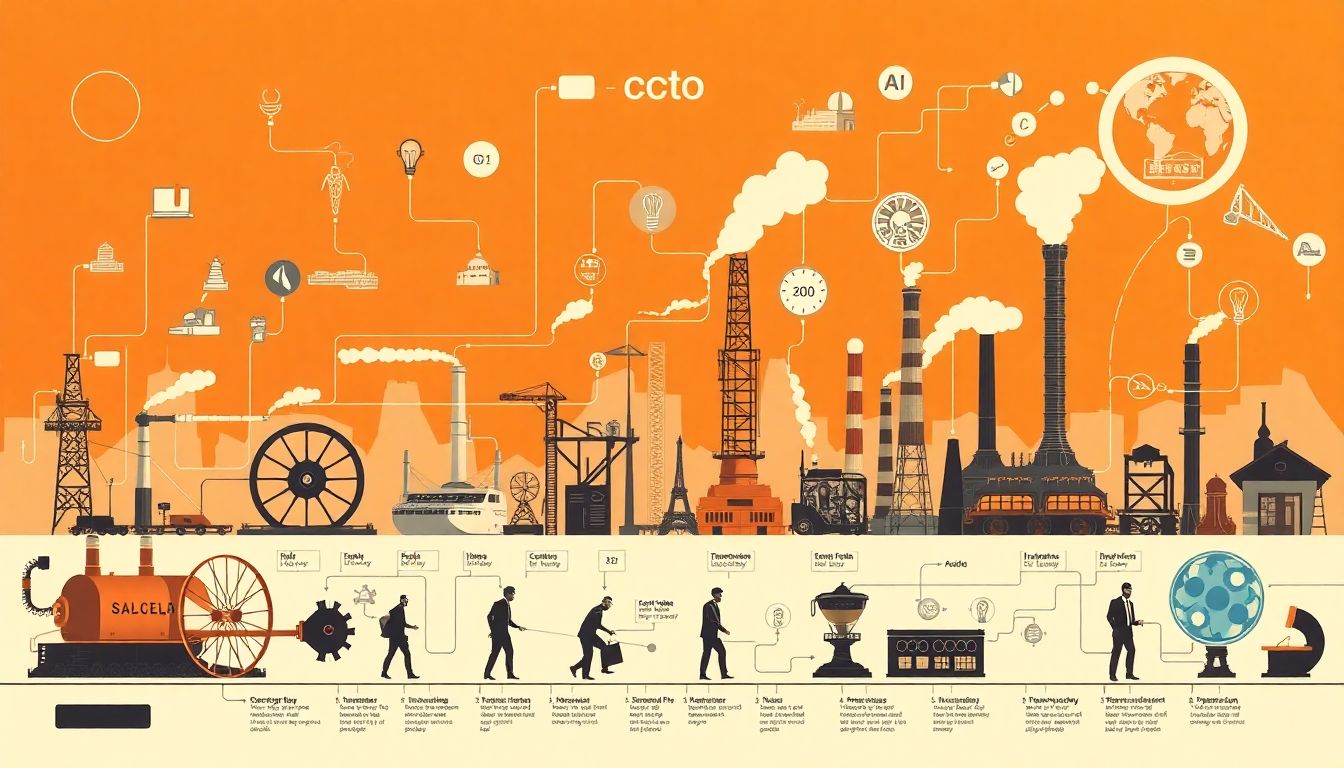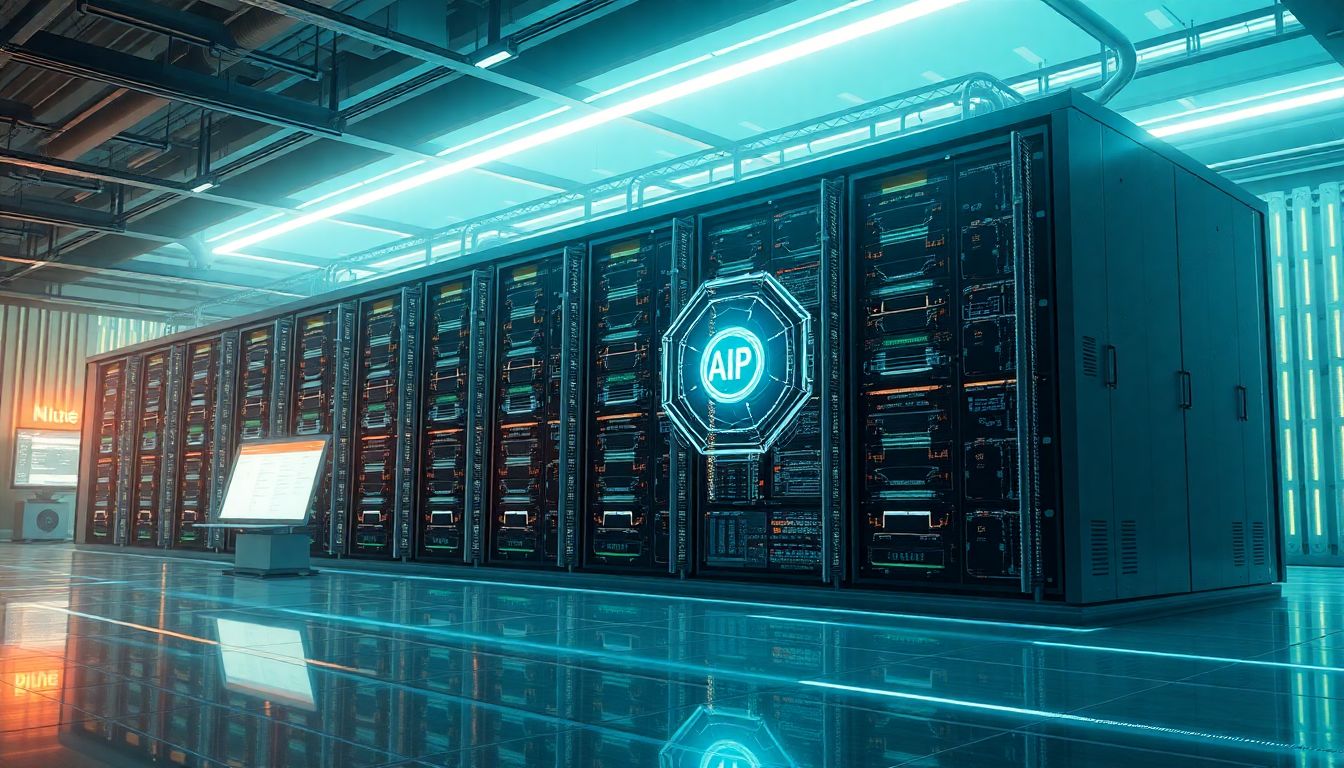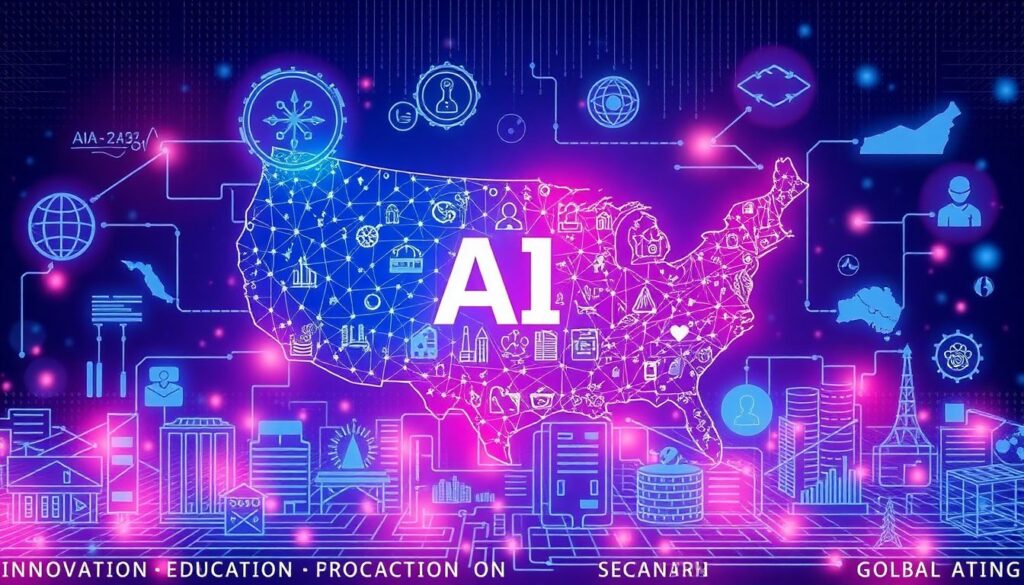Welcome to an exciting exploration of how artificial intelligence can shape the future of the American economy and technological landscape. In this article, we’ll delve into the opportunities and strategies that can propel the United States to new heights in the AI era, drawing parallels with historical industrial revolutions and highlighting the role of key players in this transformative journey.
Harnessing AI to Invigorate the Nation’s Economy
The integration of AI technology into the American economy is a spectacle of transformative innovation, touching virtually every sector with its automation and predictive analytics. In healthcare, AI is revolutionizing patient care and diagnostics, with algorithms outperforming human specialists in detecting diseases, and robotic assistants aiding in complex surgeries. The financial sector has embraced AI for fraud detection and risk assessment, while in retail, AI-driven personalization is enhancing customer experiences and driving sales.
Education is another frontier where AI is making significant inroads. Adaptive learning platforms are tailoring educational content to individual students’ needs, promising to democratize access to quality education. Furthermore, AI is facilitating global collaboration, with machine translation tools breaking down language barriers and enabling real-time international cooperation. However, the promise of AI is not without its challenges. Issues such as data privacy, job displacement due to automation, and the potential for AI to exacerbate social inequalities must be addressed to ensure that the benefits of AI are distributed equitably across society.

Technology as a Foundation for Economic Growth
The concept of industrial revolutions is intrinsically linked to the evolution of societies and their economic structures. The first industrial revolution, commencing in the late 18th century, was characterized by the shift from agrarian societies to industrial ones, driven by mechanical production and the steam engine. This period saw significant economic growth and societal change, but also presented challenges such as labor exploitation and environmental degradation.
The second industrial revolution, beginning in the late 19th century, introduced mass production and assembly lines, epitomized by Henry Ford’s automobile factories. While this era brought advances in productivity and standardization, it also led to issues like worker alienation and increased inequality. The third industrial revolution, starting in the mid-20th century, was marked by the digital revolution, with computers and the internet transforming communication, data processing, and automation. However, it also raised concerns about data privacy, job displacement due to automation, and the digital divide.
As we stand on the cusp of the fourth industrial revolution, Artificial Intelligence (AI) emerges as a potential General-Purpose Technology (GPT) that could drive economic growth. AI’s ability to process vast amounts of data, learn, and make decisions can enhance productivity across various sectors. Here are some points to consider:
- AI can automate routine tasks, freeing up human time for more creative and strategic work.
- It can lead to significant advancements in fields like healthcare, education, and climate modeling.
- AI has the potential to generate substantial economic value, with some estimates suggesting it could contribute trillions to the global economy.
However, AI also presents challenges that need to be addressed:
-
Job displacement:
AI could automate certain jobs, leading to unemployment in specific sectors.
-
Bias and fairness:
AI systems can inadvertently perpetuate or even amplify existing biases if not designed carefully.
-
Privacy and security:
The data-driven nature of AI raises concerns about data privacy and cybersecurity.
-
Explainability and accountability:
AI decisions can be complex and difficult to understand, posing challenges for accountability.
In conclusion, while AI holds immense promise as the next GPT driving economic growth, it is crucial to address its associated challenges to ensure that the benefits are widespread and equitable.

World-Leading AI Technology and Infrastructure
The current state of AI technology and infrastructure in the United States is marked by rapid advancements and significant investments, driven largely by the private sector. Tech giants such as Google, Microsoft, and Amazon are at the forefront, pouring billions of dollars into AI research and development. These investments have led to groundbreaking innovations in machine learning algorithms, natural language processing, and computer vision. The private sector’s role has been pivotal in accelerating the deployment of AI across various industries, from healthcare to finance and retail. Notably, collaborations between academia and industry have fostered a robust ecosystem for AI innovation, with universities and research institutions partnering with corporations to push the boundaries of what’s possible.
However, the heavy reliance on private sector investments also raises several concerns. One of the most pressing issues is the potential for a digital divide. Smaller companies and startups may struggle to keep up with the pace of innovation set by tech giants, leading to a monopoly of AI advancements by a few dominant players. Additionally, there are ethical considerations surrounding AI, including bias in algorithms, privacy concerns, and job displacement due to automation. The private sector’s focus on profitability can sometimes overshadow these ethical implications, leading to a need for stronger regulatory frameworks.
Despite these challenges, the collaborative efforts between the private sector and government initiatives are beginning to address some of these issues. For instance, the National AI Research and Development Strategic Plan outlines a roadmap for fostering AI innovation while ensuring ethical considerations are met. Furthermore, public-private partnerships are being established to democratize access to AI technologies, ensuring that smaller businesses and underserved communities can also benefit from these advancements. Key initiatives include:
- Federal funding for AI research in universities and national labs
- Grants and incentives for startups working on innovative AI solutions
- Educational programs to upskill the workforce in AI-related fields

AI Skilling and Workforce Development
The advent of Artificial Intelligence (AI) is undeniably transforming the job landscape, making skilling programs an imperative rather than an option for workforce preparation. These programs play a crucial role in equipping employees with the necessary tools to thrive in an AI-driven environment. Firstly, they help workers understand and interact with AI systems effectively, fostering a smoother transition into roles that require human-AI collaboration. Secondly, they facilitate upskilling and reskilling, enabling employees to take on more complex tasks that machines cannot easily replicate, such as critical thinking, creativity, and problem-solving.
However, it’s essential to examine skilling programs through an impartial lens, recognizing both their advantages and drawbacks. On the positive side, these initiatives can bolster employee confidence and job satisfaction by empowering them with relevant skills. Moreover, companies investing in skilling programs may see improved productivity and innovation. Conversely, there are challenges to consider:
-
Accessibility:
Not all employees may have equal access to these programs, exacerbating skill gaps within organizations.
-
Cost:
Developing and implementing effective skilling programs requires significant financial investment.
-
Effectiveness:
Without quality control, programs may not deliver the intended results, leading to wasted resources and misaligned expectations.
To maximize the benefits of skilling programs, it’s vital to address these concerns proactively. This could involve allocating resources to ensure program accessibility, fostering a culture of continuous learning, and regularly evaluating and updating the curriculum to keep pace with AI advancements. Additionally, it’s important to set clear expectations and provide support for employees, understanding that learning new skills can be a challenging and time-consuming process. By taking these steps, organizations can better prepare their workforce for AI adoption and the future of jobs, mitigating potential risks and capitalizing on the opportunities that AI presents.
FAQ
What is a General-Purpose Technology (GPT) and why is AI considered one?
How can the private sector contribute to America’s AI leadership?
- Investing in AI research and development
- Collaborating with educational institutions and non-profits
- Building AI-enabled infrastructure
What role do skilling programs play in AI adoption?
- Prepare the workforce for new job roles
- Integrate AI technologies into educational curricula
- Develop apprenticeship and skills programs in STEM fields
How can the United States export American AI to its allies?
- Strengthening international partnerships
- Sharing AI advancements and best practices
- Promoting AI-enabled solutions that benefit other countries
